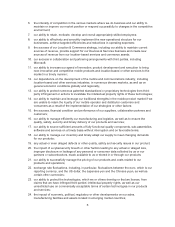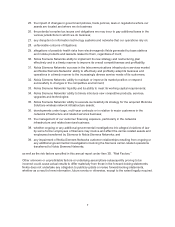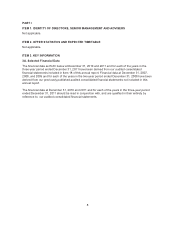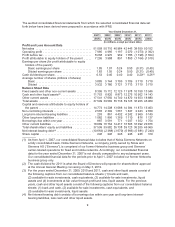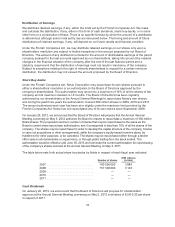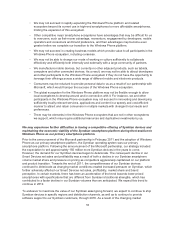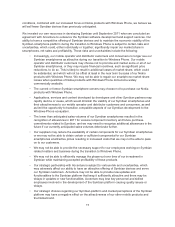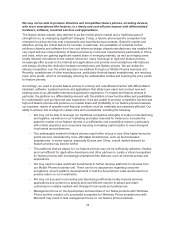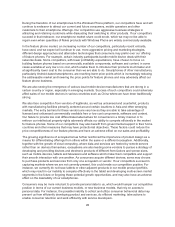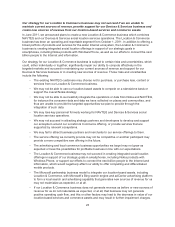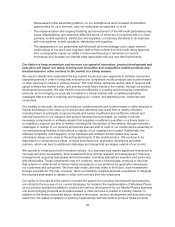Nokia 2011 Annual Report Download - page 18
Download and view the complete annual report
Please find page 18 of the 2011 Nokia annual report below. You can navigate through the pages in the report by either clicking on the pages listed below, or by using the keyword search tool below to find specific information within the annual report.• We may not succeed in rapidly expanding the Windows Phone platform and related
ecosystem beyond its current use in high-end smartphones to more affordable smartphones,
limiting the expansion of this ecosystem.
• Other competitive major smartphone ecosystems have advantages that may be difficult for us
to overcome, such as first-mover advantage, momentum, engagement by developers, mobile
operators and consumers and brand preference, and their advantages may become even
greater before we complete our transition to the Windows Phone platform.
• We may not succeed in creating business models which provide value to all participants in the
Windows Phone ecosystem, including ourselves.
• We may not be able to change our mode of working or culture sufficiently to collaborate
effectively and efficiently both internally and externally with a large community of partners.
• We manufacture mobile devices, but currently no other adjacent products, such as tablets,
computers and other connected devices. As a result, we may not be able to attract developers
and other participants to the Windows Phone ecosystem if they do not have the opportunity to
leverage their offerings across a wide range of different mobile and electronic products.
• Consumers may be reluctant to provide personal data to us as a result of our partnership with
Microsoft, which would hamper the success of the Windows Phone ecosystem.
• The global ecosystem for the Windows Phone platform may not be flexible enough to allow
local ecosystems to develop around and in connection with it. For instance, we and other
participants in the Windows Phone ecosystem may not succeed in innovating and developing
sufficiently locally relevant services, applications and content in a speedy and cost-efficient
manner to attract and retain consumers in multiple markets with divergent local needs and
preferences.
• There may be elements in the Windows Phone ecosystem that are not in other ecosystems
we support, which may require additional resources and duplicative investments by us.
We may experience further difficulties in having a competitive offering of Symbian devices and
maintaining the economic viability of the Symbian smartphone platform during the transition to
Windows Phone as our primary smartphone platform.
Prior to the announcement of the Microsoft partnership in February 2011 and the adoption of Windows
Phone as our primary smartphone platform, the Symbian operating system was our primary
smartphone platform. Following the announcement of the Microsoft partnership, our strategy included
the expectation to sell approximately 150 million more Symbian devices in the years to come.
However, the demand for our Symbian devices began to deteriorate. The consequent decline in our
Smart Devices net sales and profitability was a result of both a decline in our Symbian smartphone
volume market share and pressure on pricing as competitors aggressively capitalized on our platform
and product transition. Towards the end of 2011, the competitiveness of our Symbian devices
continued to deteriorate as changing market conditions created increased pressure on Symbian, which
further adversely affected our Smart Devices net sales, profitability, market share and brand
perception. In certain markets, there has been an acceleration of the trend towards lower-priced
smartphones with specifications that are different from Symbian’s traditional strengths, which has
contributed to a faster decline in our Symbian volumes than we anticipated. We expect this trend to
continue in 2012.
To endeavor to maximize the value of our Symbian asset going forward, we expect to continue to ship
Symbian devices in specific regions and distribution channels, as well as to continue to provide
software support to our Symbian customers, through 2016. As a result of the changing market
16


